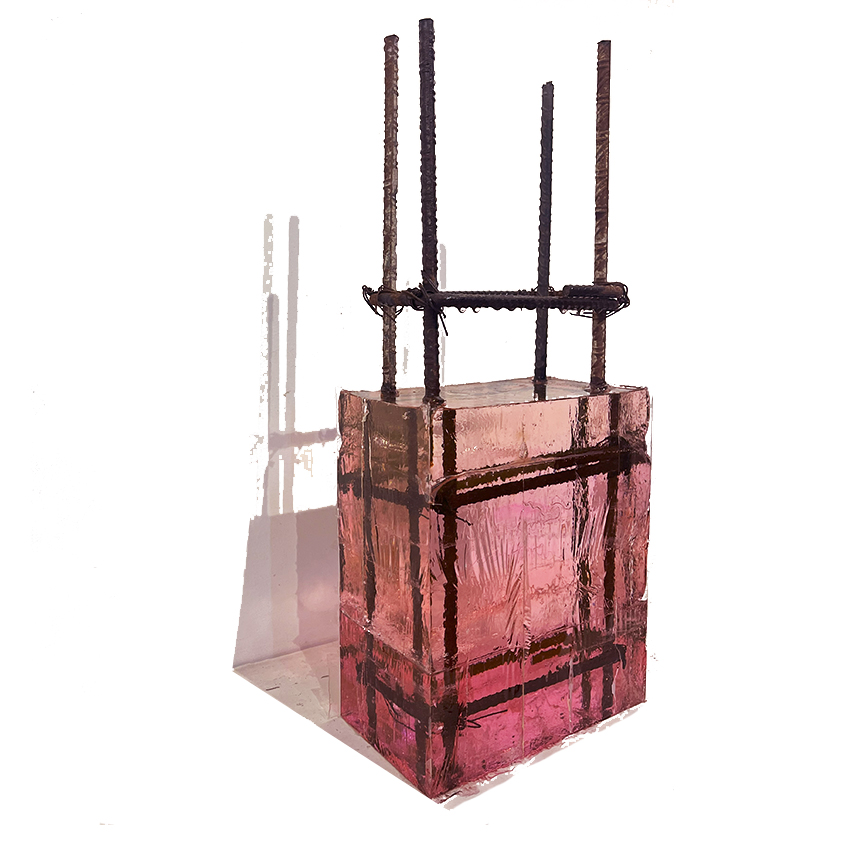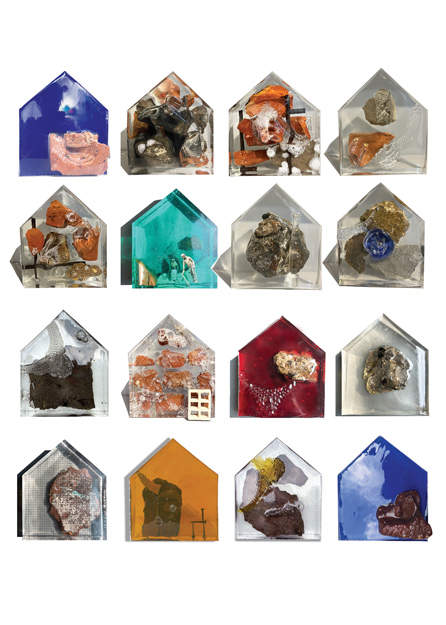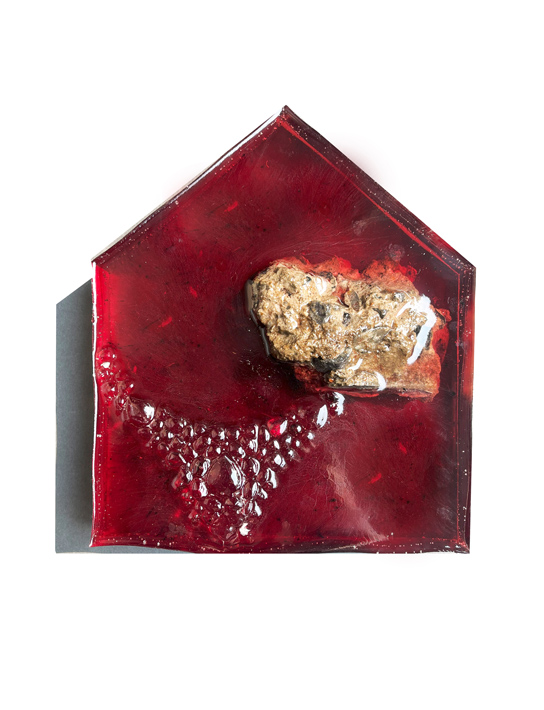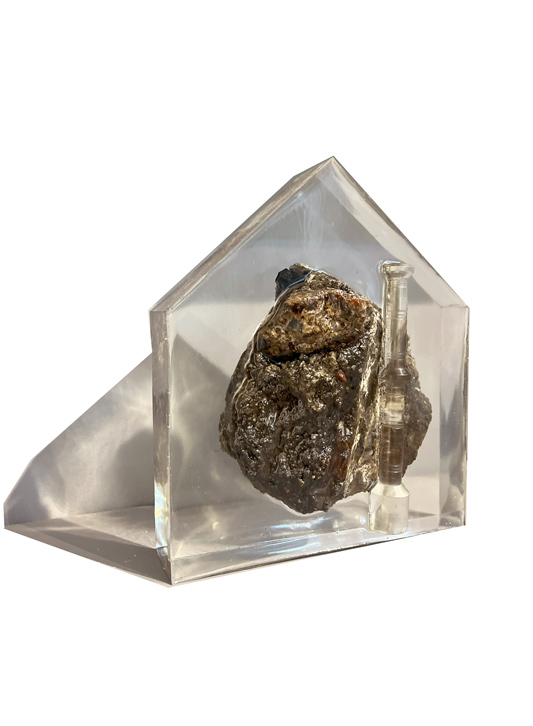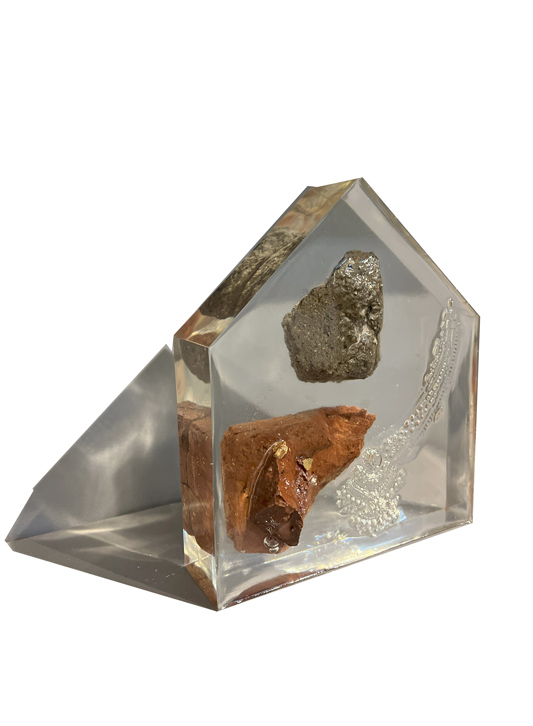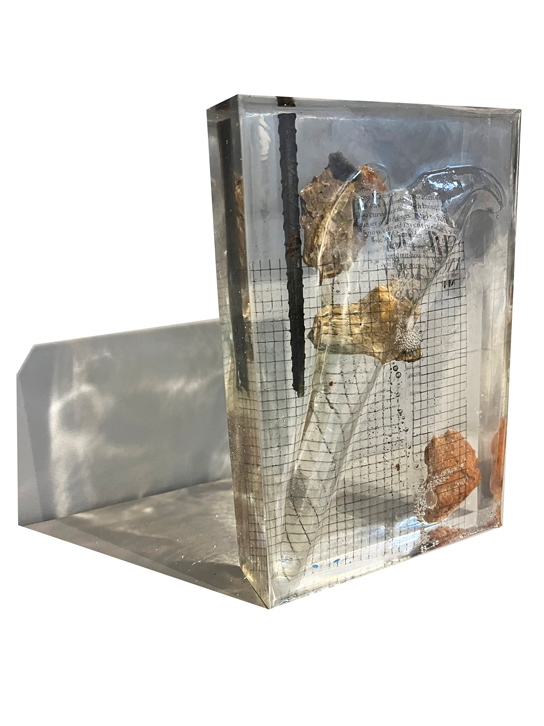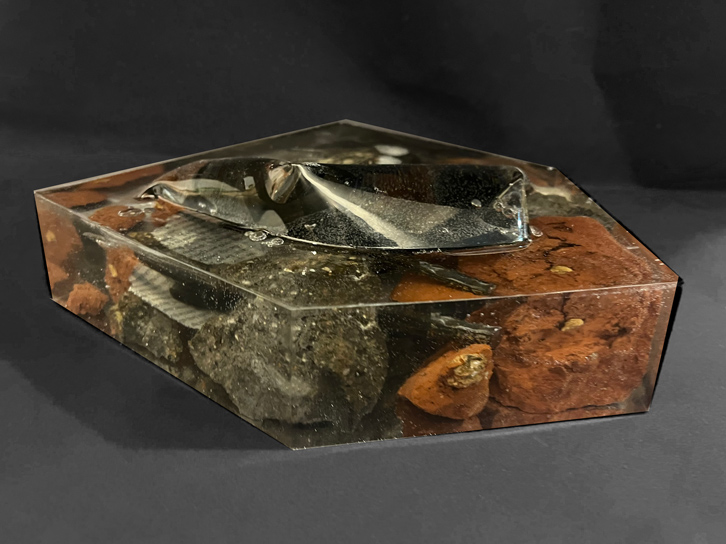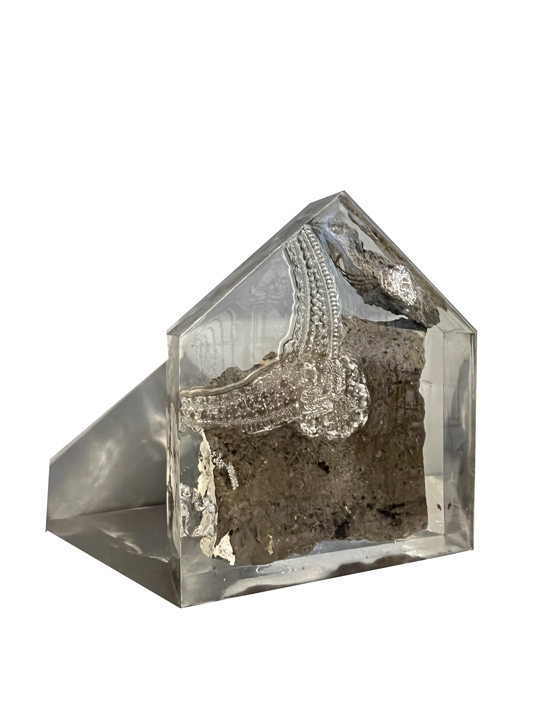“After the loss of my mother to COVID-19, I have been drawn to contemplate the true meaning of ‘home.’ Is it merely a physical structure, or is it something deeper, more intangible—an essence that has shaped my very identity? Through my art, I navigate the interplay between structure and fluidity, embarking on an ongoing journey of self-discovery. In doing so, I create personal sanctuaries amidst the shifting landscapes of memory.”
— Harman Taneja
Delhi-based artist and architect Harman Taneja delves into the realm of sculptural art, often choosing resin as her medium of expression. Her series titled “home treasures” is more than a mere collection of artworks; it is an intimate archive, where each object speaks to a profound connection—whether to herself or to the memory of her late mother. What might first appear as an assortment of cherished belongings also reflects the mundane, the everyday—a dialogue between the prized and the commonplace.
Taneja’s work continually revisits the fluidity of memory and its power to shape identity. In her “Composite” series, she uses terrazzo—a substance that begins as a liquid and takes form within molds—as a powerful metaphor for how our memories and identities crystallize within the structured boundaries of our lives.
Her artistic practice is further characterized by the integration of raw materials salvaged directly from construction sites—reinforcement bars, concrete, found objects—each meticulously encased in resin. These elements, often perceived as stark and utilitarian, are transformed through Taneja’s sculpting, becoming symbols of permanence and impermanence, of rigidity and flow. Through her hands, they transcend their original purpose, embodying a delicate balance between what is built and what remains ever-changing.


